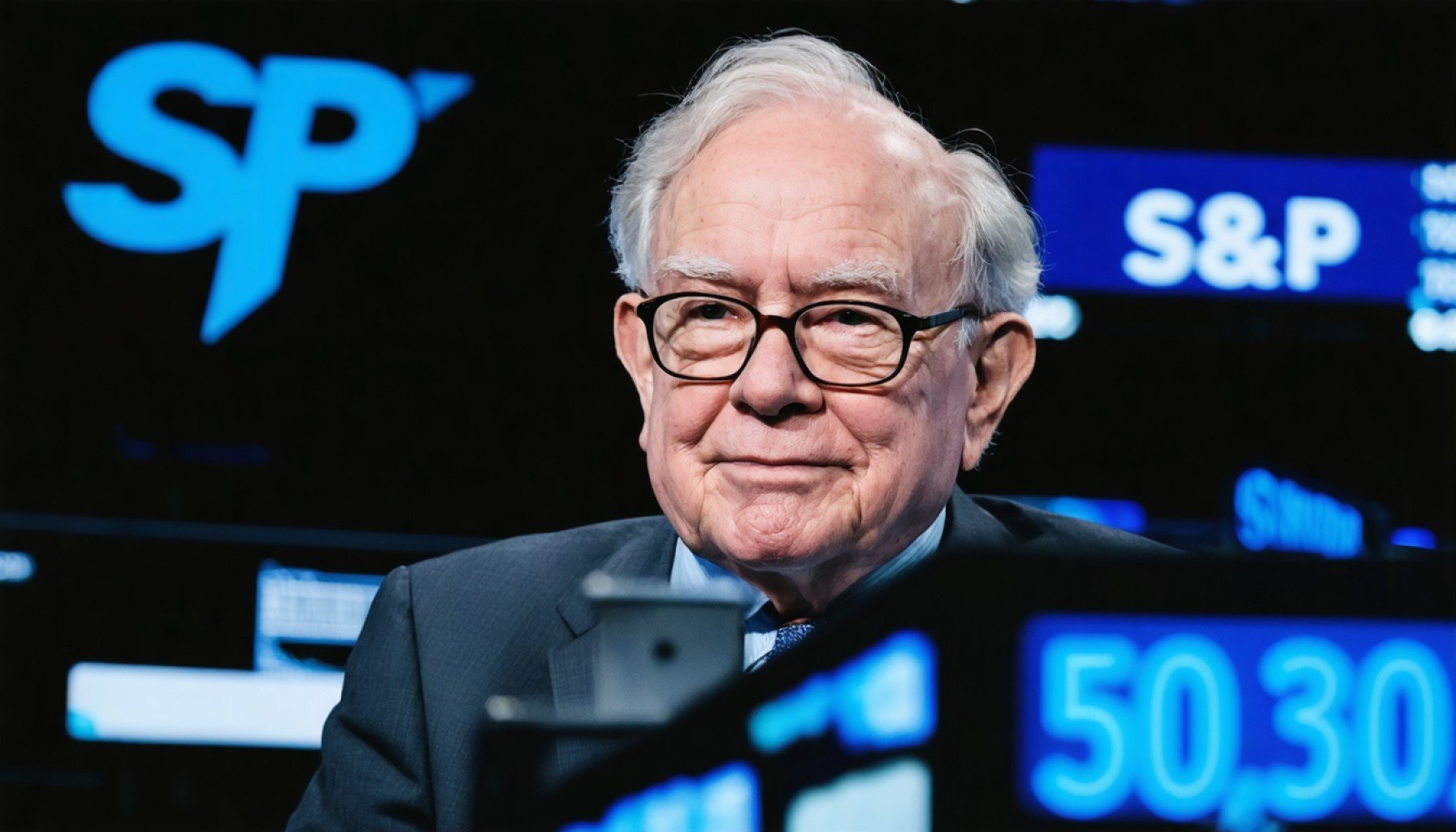- Warren Buffett’s Berkshire Hathaway has exited its positions in major S&P 500 ETFs, including the SPDR S&P 500 ETF Trust and Vanguard S&P 500 ETF.
- Despite Buffett’s past endorsements, this move indicates concerns about the S&P 500’s current dynamics.
- A few large technology companies significantly influence the S&P 500, raising risks of volatility and skewed performance.
- The S&P 500’s forward 12-month price-to-earnings ratio is above historical averages, suggesting a possible market correction.
- Buffett’s strategy reflects adaptation rather than an overall market retreat; significant investments remain in S&P 500 companies like Bank of America and Apple.
- Berkshire’s increased cash reserves hint at potential future opportunities.
- The change underscores the importance of adaptability and market awareness for investors.
Warren Buffett, revered for his straightforward investment advice, often champions the stability of S&P 500 index funds. Yet, in a curious twist, his conglomerate, Berkshire Hathaway, recently shed its holdings in prominent S&P 500 ETFs, sparking intrigue and speculation.
For years, Buffett lauded index funds, heralding them as the prudent choice for both novice and seasoned investors to sidestep hefty fees and garner solid returns. His faith in these funds seemed unshakeable. However, data reveals that by the end of last year, Berkshire quietly exited positions in the SPDR S&P 500 ETF Trust and Vanguard S&P 500 ETF, divulged in February’s financial disclosures.
What’s behind Buffett’s unexpected pivot? Market murmurings suggest his retreat signals concerns about the index’s current dynamics. A few high-valuer technology giants now overshadow the S&P 500, and their performance heavily skews the index’s fate. Any volatility in these tech titans could ripple through the index dramatically. Moreover, the S&P 500’s valuation, gauged by the forward 12-month price-to-earnings ratio, hovers above historical norms, cautioning a potential market correction.
But don’t mistake Buffett’s move for a broad market exodus. Berkshire retains significant stakes in marquee S&P 500 companies like Bank of America and Apple, indicating a refined strategy rather than an outright market dismissal. Indeed, Buffett’s cash reserves have burgeoned, suggesting a strategic retreat in anticipation of future opportunities.
This maneuver challenges investors: Adaptability remains key in a shifting landscape. While index funds offer simplicity, a deeper dive into market currents can reveal new paths to prosperity. In the ever-evolving world of finance, staying agile is essential.
Why Warren Buffett’s Shift from S&P 500 ETFs Matters More Than You Think
Analyzing Warren Buffett’s Investment Strategy Shift
Warren Buffett’s decision to move away from S&P 500 ETFs has left many investors puzzled, sparking debates and speculation. Here’s a comprehensive exploration of this strategic pivot, focusing on potential reasons, market implications, and how investors can respond.
How-To Steps & Life Hacks
1. Diversify Beyond ETFs: While index funds provide a straightforward way to invest, consider adding individual high-quality stocks to your portfolio to hedge against specific sector risks.
2. Watch P/E Ratios: Monitor the price-to-earnings (P/E) ratio of the S&P 500. Use this metric as a gauge for potential market corrections or overvaluation.
3. Stay Liquid: Buffett’s increase in cash reserves suggests the importance of liquidity. Retain some cash to capitalize on new opportunities or market corrections.
4. Research Market Trends: Stay informed about the sectors dominating indexes like the S&P 500. Tech sector volatility can significantly impact index performance.
Real-World Use Cases
– Institutional Investors: Use Buffett’s strategy as a blueprint for cautious divestment, reallocating funds into sectors promising better long-term stability.
– Retail Investors: Look for value stocks within or outside the S&P 500 that aren’t influenced heavily by current tech valuations.
Market Forecasts & Industry Trends
The market landscape is evolving, with tech giants heavily influencing the dynamics of indexes like the S&P 500. Analysts predict persistent volatility in tech due to regulatory pressures and interest rates adjustments. Understanding these macroeconomic factors is crucial for future planning (link name).
Reviews & Comparisons
Comparing S&P 500 ETFs with strategic growth ETFs or value-based funds reveals a significant difference in potential risk exposure. Growth funds often carry more risk but with possibility for higher gains, while value funds offer more stability.
Controversies & Limitations
Buffett’s disengagement with S&P 500 ETFs could arguably mislead novice investors who interpret this as a sign to avoid index funds. However, it’s important to distinguish personal strategy shifts from overarching investment wisdom.
Features, Specs & Pricing
SPDR S&P 500 ETF Trust: Known for its low expense ratio, this ETF offers broad market exposure but can be susceptible to tech sector swings due to its market cap weighting.
Vanguard S&P 500 ETF: Offers similar exposure with a focus on keeping expenses minimal, but mirrors the SPDR in tech exposure risks.
Security & Sustainability
Economic uncertainties, including inflated valuations and geopolitical tensions, contribute to the unpredictability of index funds. However, their diversified nature inherently provides a level of security against volatility compared to individual stocks.
Insights & Predictions
Buffett’s decision might imply a forthcoming correction, but it also underscores adaptability’s importance. By observing his moves, investors can better understand how to anticipate and react to market shifts.
Tutorials & Compatibility
Investors interested in moving beyond ETFs should educate themselves via comprehensive online courses and financial news platforms offering insights into distinct sectors and individual stock analysis.
Pros & Cons Overview
Pros of S&P 500 ETFs:
– Diversification
– Low fees
– Historical stability
Cons:
– Over-reliance on top-performing sectors
– Limited flexibility in unforeseen market tremors
Actionable Recommendations
– Start with Education: Familiarize yourself with modern financial tools and indices.
– Explore Sectors: Look at sectors like healthcare and utilities for more stable opportunities.
– Regularly Review: Reassess your portfolio regularly to align with market dynamics.
– Adopt a Flexible Approach: Be prepared to shift strategy based on market forecasts and economic policies.
Ultimately, Buffett’s strategies highlight the value of vigilance and agility in investing, encouraging investors to think beyond conventional wisdom while staying grounded in robust research and financial fundamentals.



















